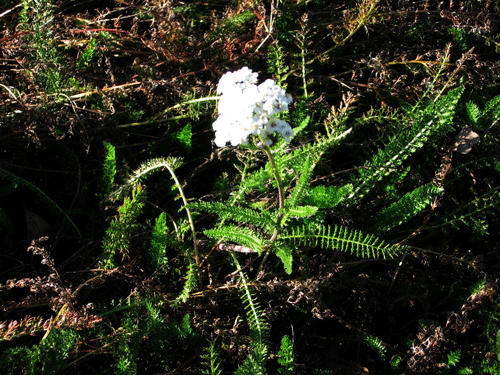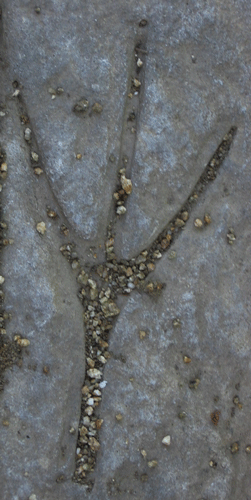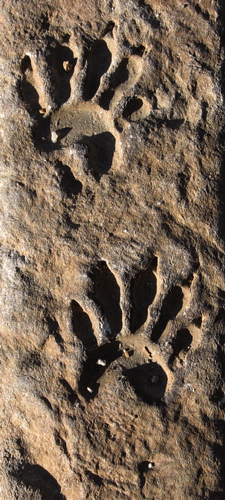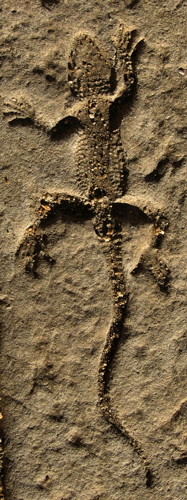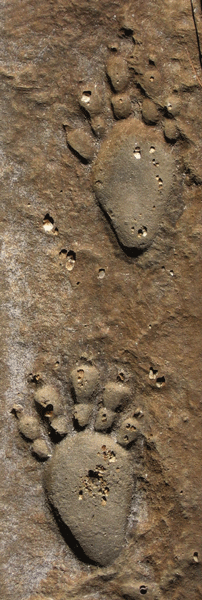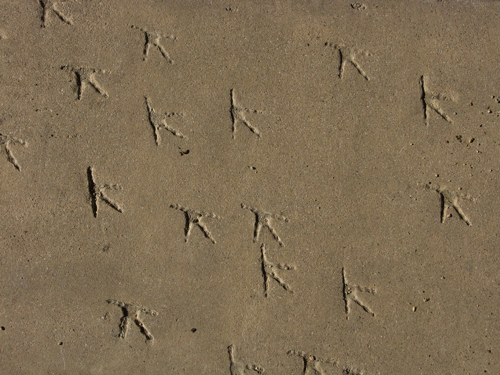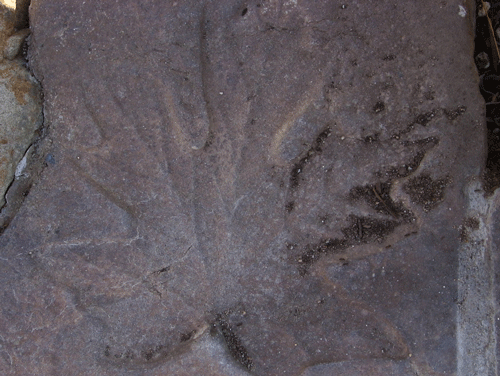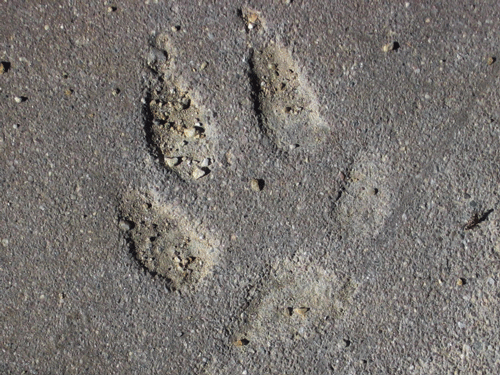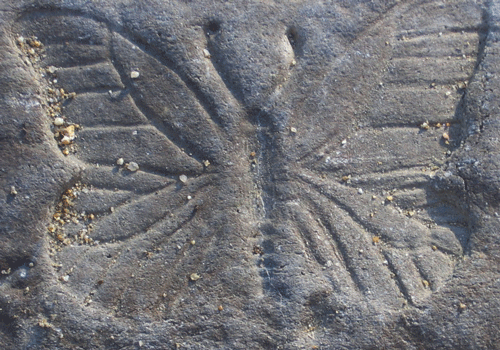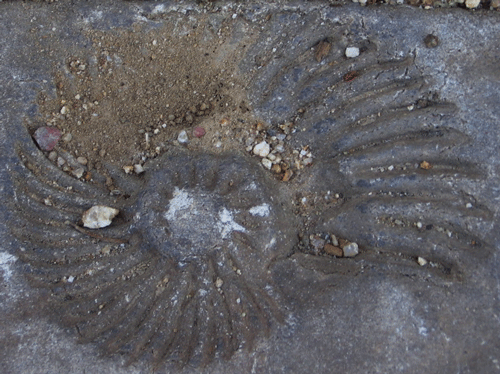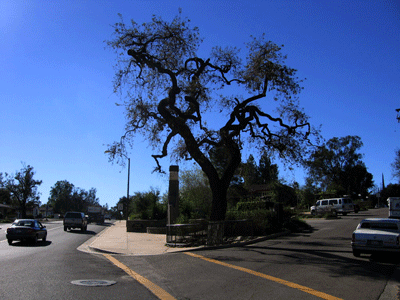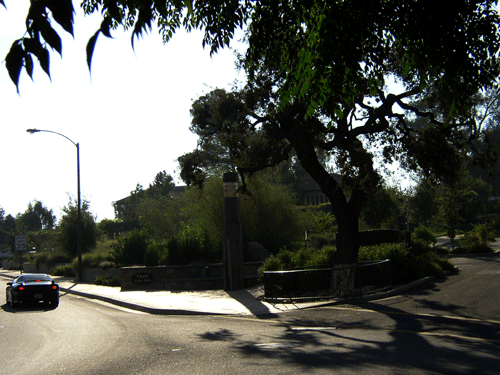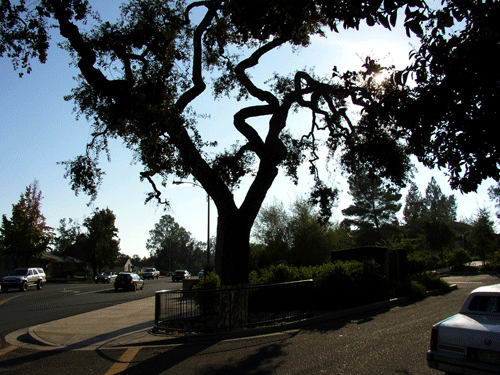The park has several garden themes and landscape aspects, including a butterfly garden, a riparian (streamside) landscape, a sage-scented garden, a grass meadow, and other themed gardens; seven gardens in all. There is also a Discovery Trail, Donor Plaza, and the two trellised paths. The park has two fountains, symbolizing the sun and the moon, connected by an ephemeral stream.
Throughout this park are found good examples of how you can use natives in your own garden. Also, there are many nice details clearly visible and nearly hidden, scattered throughout. It is truly a treasure hunt to wander throught this park and discover all it has to offer, from design details, nooks and cranies, fossil and wildlife footprints, leaf prints, boulders of every size, wildflowers and flowering bushes, not to mention all the sweet and strong scents perfuming the air from the native plants used in this park.
This first page provides a sampling of the different features of this unique park. Previous pages provided photos of a few of the focused themes of the park.
Fuchsia-flowered Gooseberry (Ribes speciosum), a member of the Gooseberry family (Grossulariaceae) is a beautiful shrub with glossy dark green leaves and pendulous deep red flowers that are reminescent of ornamental fuchsias. This plant grows well in a partially shaded site and blooms in the late winter and early spring.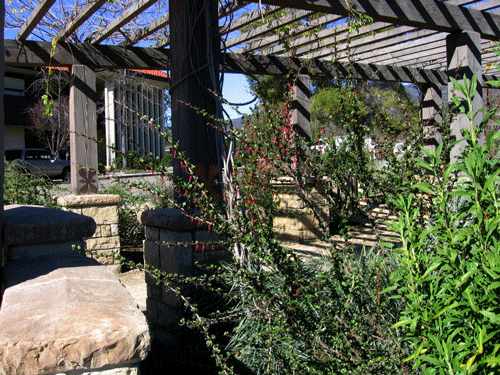
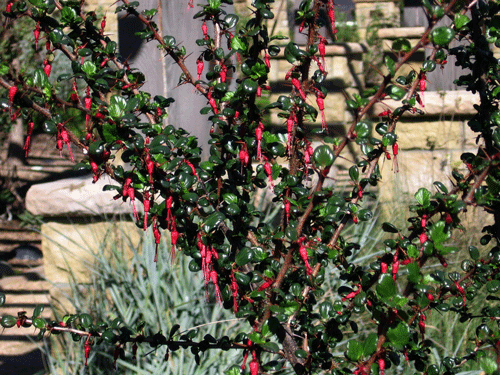
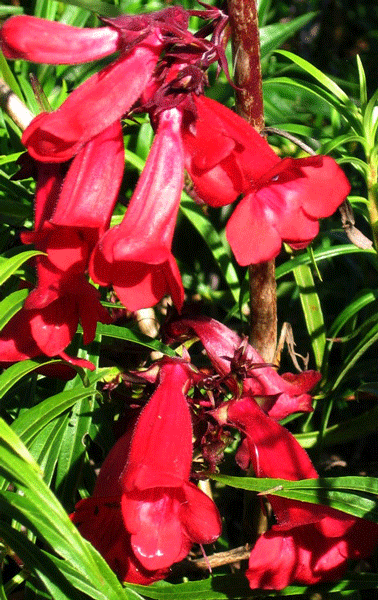 Penstemon or Beardtongue (Penstemon sp.), a member of the Plantain family (Plantaginaceae [formerly included in the Scrophulariaceae]) is an attractive small shrub with green leaves and red to blue to salmon to yellow-colored flowers. This plant shown here is a cultivar of a native Penstemon, which grows well in a full sun and blooms much of the year. There are many species of Penstemon that you can use in your garden, including annuals and long-lived perennials. Some of the annual Penstemons will reseed readily each year.
Penstemon or Beardtongue (Penstemon sp.), a member of the Plantain family (Plantaginaceae [formerly included in the Scrophulariaceae]) is an attractive small shrub with green leaves and red to blue to salmon to yellow-colored flowers. This plant shown here is a cultivar of a native Penstemon, which grows well in a full sun and blooms much of the year. There are many species of Penstemon that you can use in your garden, including annuals and long-lived perennials. Some of the annual Penstemons will reseed readily each year.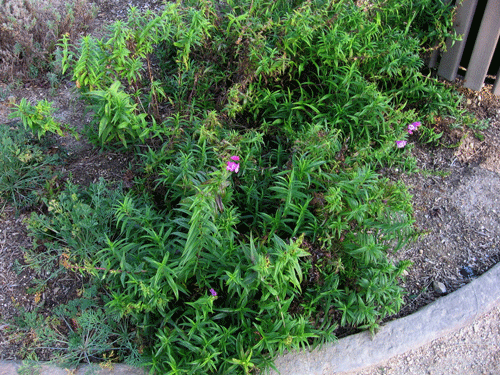
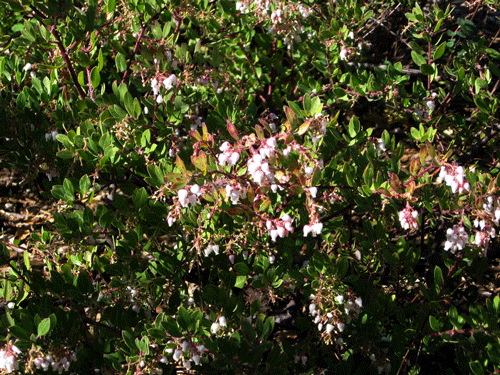 Manzanita (Arctostaphylos sp.), a member of the Heath family (Ericaceae) is an attractive small shrub with dark green leaves and pendulous white to pink, urn-shaped flowers. This plant grows well in a full sun and blooms in the late winter and early spring. There are many species of manazanita that you can use in your garden, ranging from low mounding carpets to small rounded shrubs to upright tall shrubs, some tree-like. Most of the manzanitas have smooth red bark, which contrasts nicely with the green leaves.
Manzanita (Arctostaphylos sp.), a member of the Heath family (Ericaceae) is an attractive small shrub with dark green leaves and pendulous white to pink, urn-shaped flowers. This plant grows well in a full sun and blooms in the late winter and early spring. There are many species of manazanita that you can use in your garden, ranging from low mounding carpets to small rounded shrubs to upright tall shrubs, some tree-like. Most of the manzanitas have smooth red bark, which contrasts nicely with the green leaves.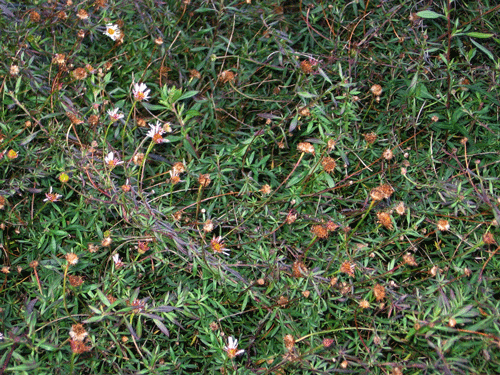
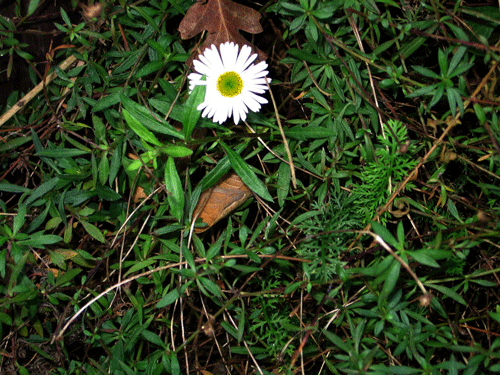
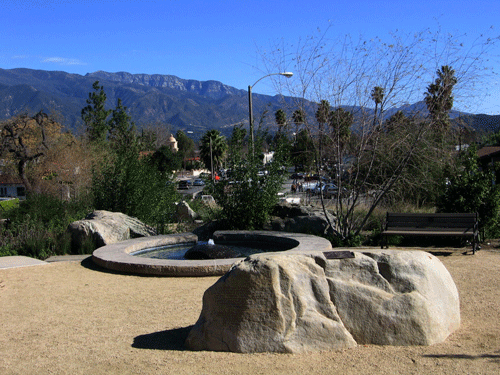
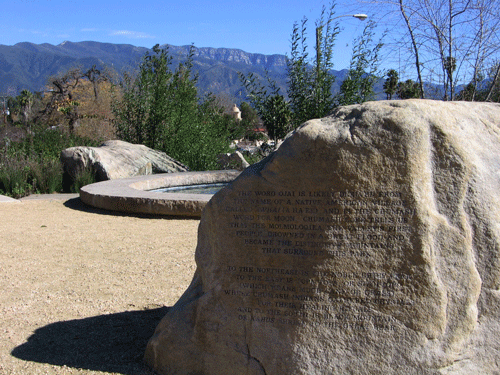
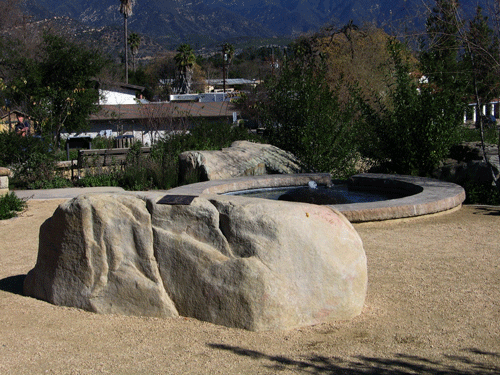
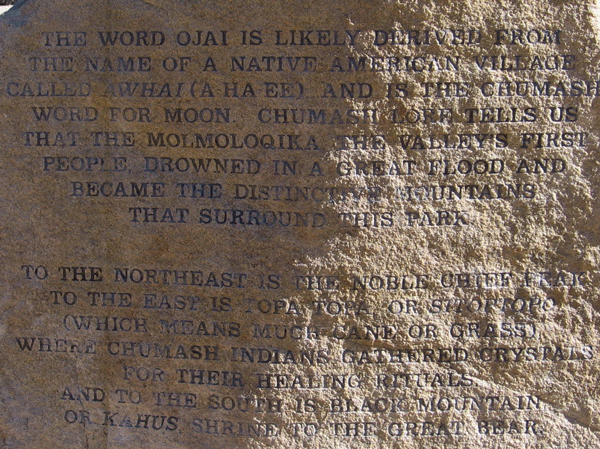
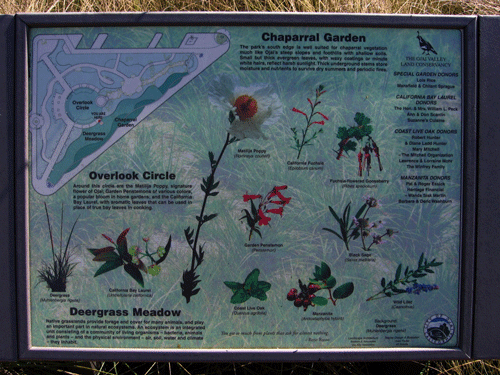
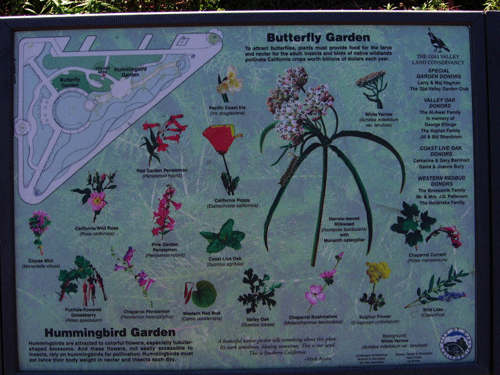
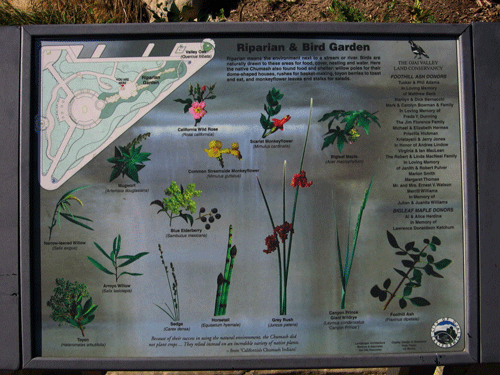
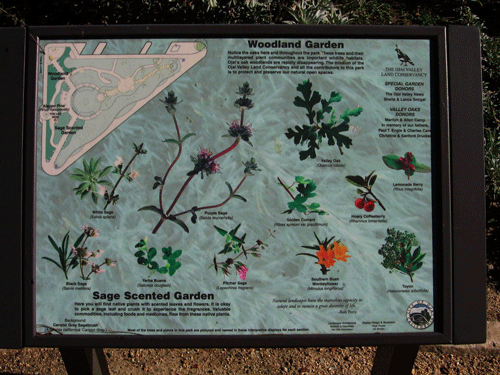

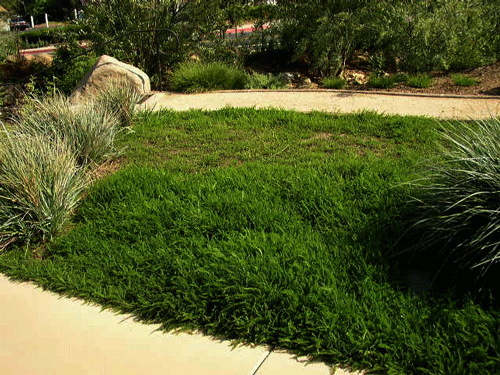
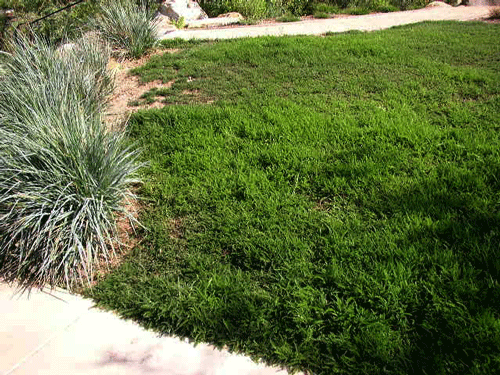 White Yarrow (Achillea millefolium) is used as a groundcover that can be used as a substitute for lawn turfgrasses. This plant can be mowed, or not, and will tolerate light traffic. This is part of the Woodland Garden, with Coast Live Oak (Quercus agrifolia) trees scattered about, which will provide shade, acorns for food (particularily to Acorn Woodpecker and Western Scrub-jay, and leaf litter, which will develop into a deep duff. This deep duff of decaying leaf litter keeps the soil moist, and provides a good bed for seeds and invertebrates, such as the Black-bellied Salamander, which occurs in Ojai (such as in my back yard). A cultivar of Giant Wild Rye (Leymus condensatus) provides accent around the White Yarrow ground cover.
White Yarrow (Achillea millefolium) is used as a groundcover that can be used as a substitute for lawn turfgrasses. This plant can be mowed, or not, and will tolerate light traffic. This is part of the Woodland Garden, with Coast Live Oak (Quercus agrifolia) trees scattered about, which will provide shade, acorns for food (particularily to Acorn Woodpecker and Western Scrub-jay, and leaf litter, which will develop into a deep duff. This deep duff of decaying leaf litter keeps the soil moist, and provides a good bed for seeds and invertebrates, such as the Black-bellied Salamander, which occurs in Ojai (such as in my back yard). A cultivar of Giant Wild Rye (Leymus condensatus) provides accent around the White Yarrow ground cover.
